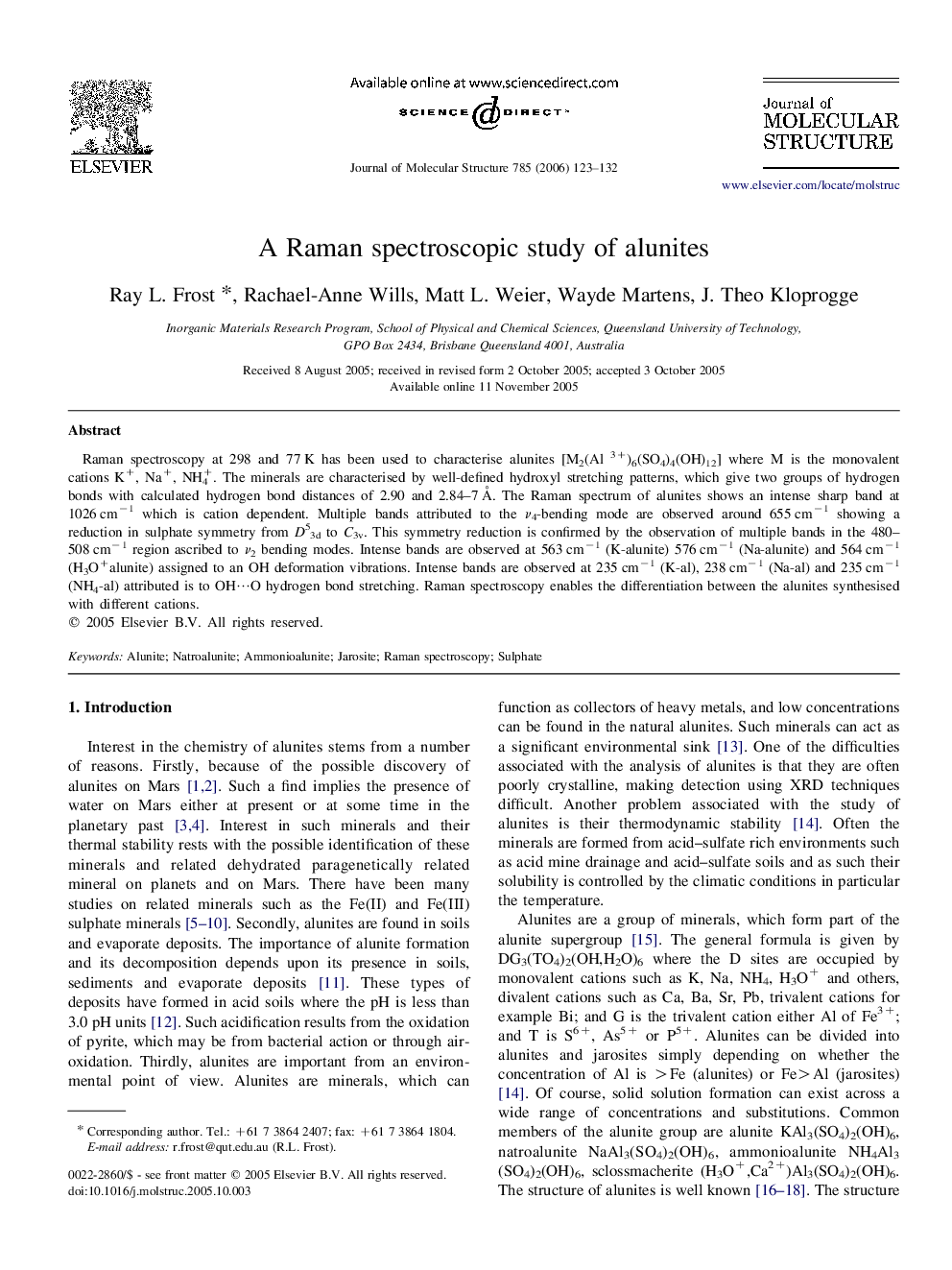| Article ID | Journal | Published Year | Pages | File Type |
|---|---|---|---|---|
| 1412023 | Journal of Molecular Structure | 2006 | 10 Pages |
Raman spectroscopy at 298 and 77 K has been used to characterise alunites [M2(Al 3+)6(SO4)4(OH)12] where M is the monovalent cations K+, Na+, NH4+. The minerals are characterised by well-defined hydroxyl stretching patterns, which give two groups of hydrogen bonds with calculated hydrogen bond distances of 2.90 and 2.84–7 Å. The Raman spectrum of alunites shows an intense sharp band at 1026 cm−1 which is cation dependent. Multiple bands attributed to the ν4-bending mode are observed around 655 cm−1 showing a reduction in sulphate symmetry from D53d to C3v. This symmetry reduction is confirmed by the observation of multiple bands in the 480–508 cm−1 region ascribed to ν2 bending modes. Intense bands are observed at 563 cm−1 (K-alunite) 576 cm−1 (Na-alunite) and 564 cm−1 (H3O+alunite) assigned to an OH deformation vibrations. Intense bands are observed at 235 cm−1 (K-al), 238 cm−1 (Na-al) and 235 cm−1 (NH4-al) attributed is to OH⋯O hydrogen bond stretching. Raman spectroscopy enables the differentiation between the alunites synthesised with different cations.
